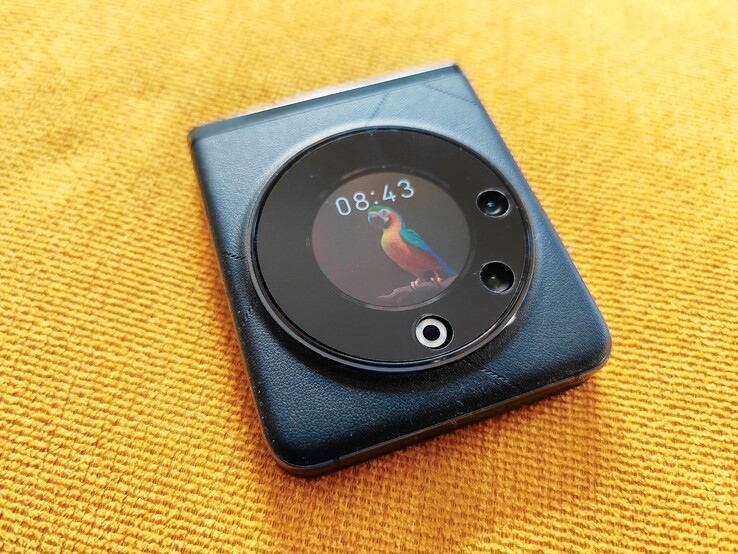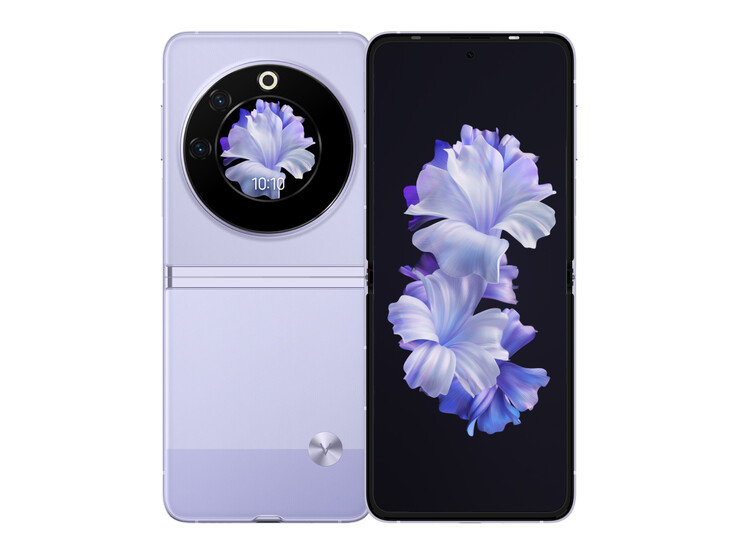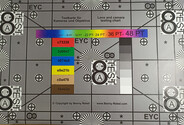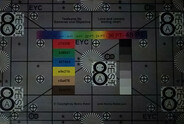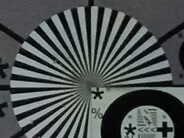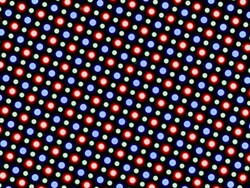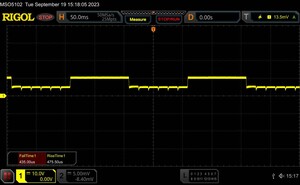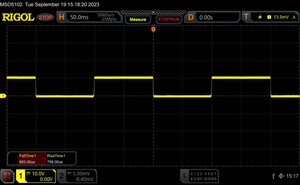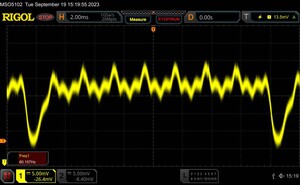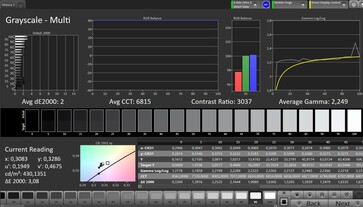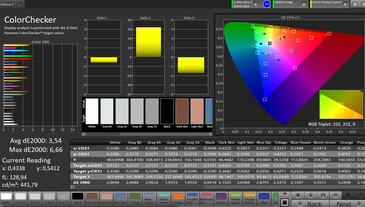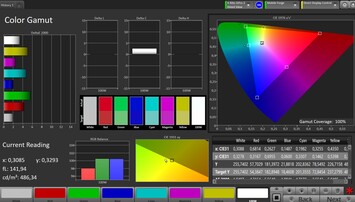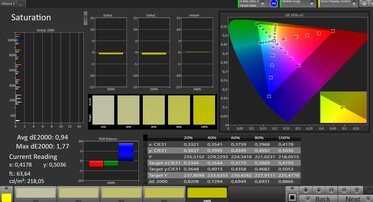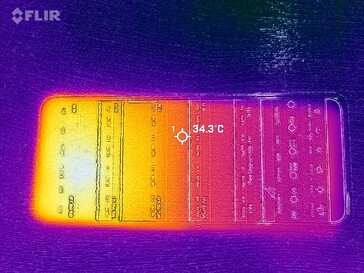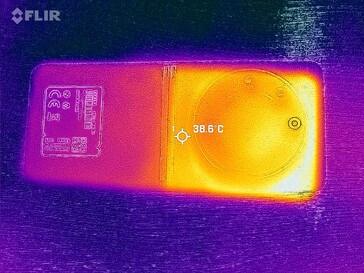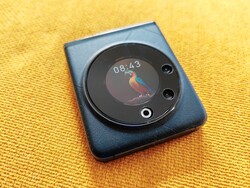Tecno Phantom V Flip 5G review - Flip phone for under 700 euros
Possible competitors in comparison
Rating | Date | Model | Weight | Drive | Size | Resolution | Price |
|---|---|---|---|---|---|---|---|
| 83.3 % v7 (old) | 10 / 2023 | Tecno Phantom V Flip Dimensity 8050, Mali-G77 MP9 | 194 g | 256 GB UFS 3.1 Flash | 6.90" | 2640x1080 | |
| 86.4 % v7 (old) | 07 / 2023 | Motorola Razr 40 SD 7 Gen 1, Adreno 644 | 188.6 g | 256 GB UFS 2.2 Flash | 6.90" | 2640x1080 | |
| 86.9 % v7 (old) | 08 / 2023 | Samsung Galaxy Z Flip5 5G SD 8 Gen 2 for Galaxy, Adreno 740 | 187 g | 256 GB UFS 4.0 Flash | 6.70" | 2640x1080 | |
| 86.1 % v7 (old) | 03 / 2022 | Huawei P50 Pocket SD 888 4G, Adreno 660 | 190 g | 512 GB UFS 3.1 Flash | 6.90" | 2790x1188 |
Case and equipment - Sturdy hinge
Like the Motorola Razr 40 or the Samsung Galaxy Z Flip5, the Phantom V Flip opens up on the short sides, so it is reminiscent of classic flip phones from the 2000s. There is a round cover display on the front, called "The Planet" by the manufacturer, around which the cameras are arranged in a radius. This makes for a unique look, but when operating the outer display you are always in danger of getting your finger into the cameras at the bottom and soiling them with greasy marks.
There are two color variants: Mystic Dawn and Iconic Black. The phone is covered with imitation leather, which has a haptically noticeable perforation in some places in our black test device. The lilac variant is also covered with imitation leather, but there is a contrasting stripe and a metallic pin on the back.
The Tecno Phantom V Flip is a few grams heavier than other flip phones, but it has a nice slim design that fits well in the pocket. The stability looks good at first touch, moderate twisting does not affect the phone.
We like the hinge, which can be opened fairly easily with one hand and keeps the screen stable in many positions. Thus, the phone can be used for photos in half-open mode like with a tripod. Unfortunately, splitting the screen for multiple apps does not work that well.
There are 256 GB of fast UFS 3.1 mass storage and 8 GB of working memory onboard, which is a good configuration, especially since the Phantom V Flip is supposed to cost 699 Euros in Europe and is thus cheaper than the comparison devices. NFC is installed, but unfortunately, the USB-C port is only connected internally according to the USB 2.0 standard, so image output and faster data transfers aren't available.
Communication, software and operation - Somewhat unreliable fingerprint sensor
WiFi 6 is the fastest supported WLAN standard, and the Phantom V Flip achieves decent transfer rates of between 588 and 877 MBit/s in our test with the reference router Asus ROG Rapture AXE 11000. This means you cannot completely utilize a gigabit Internet line, but it usually achieves quite good data throughput. Comparison devices like the Galaxy Z Flip5 or the Razr 40 support WiFi 6E and can thus access the less occupied 6 GHz band, which results in significantly higher Wi-Fi speeds.
The Tecno Phantom V Flip is a 5G smartphone that has enough frequencies for use abroad. However, there might be problems in some countries, since the flip model is not a world phone with all globally used bands. The reception was good in our approximately 2-week test phase in the inner-city area, but there were occasional dropouts.
The phone ships with Android 13, and the manufacturer customizes the interface with its own HiOS 13.5. The security patches are from June 2023 and are thus older at the time of testing.
The touchscreen on the inside can be operated very reliably and supports a polling rate of up to 360 Hz. Great: The software allows users to adjust the sensitivity of the operation, for example when scrolling, to personal preferences. The outer screen is also touch-sensitive. Simple widgets can be executed here, which can be used to take selfies or look up appointments in the calendar, for example.
The fingerprint sensor is integrated into the standby button on the casing's right. It occasionally has problems recognizing scanned fingers correctly, but unlocks the phone quite quickly when recognized.
| Networking | |
| iperf3 transmit AXE11000 | |
| Samsung Galaxy Z Flip5 5G | |
| Huawei P50 Pocket | |
| Tecno Phantom V Flip | |
| iperf3 receive AXE11000 | |
| Samsung Galaxy Z Flip5 5G | |
| Tecno Phantom V Flip | |
| Huawei P50 Pocket | |
| iperf3 transmit AXE11000 6GHz | |
| Samsung Galaxy Z Flip5 5G | |
| Motorola Razr 40 | |
| iperf3 receive AXE11000 6GHz | |
| Samsung Galaxy Z Flip5 5G | |
| Motorola Razr 40 | |
Camera - Flexible system
Two cameras and a flash module are found on the back. On the one hand, this is the main lens, which has a resolution of 64 megapixels, but normally only takes pictures with 16 megapixels and thus uses larger pixels with a higher light yield.
The main camera takes reasonably colorful pictures of close objects with decent details and a somewhat artificial-looking bokeh effect. The surrounding image also looks quite rich in details overall and is well brightened. The main camera also does a decent job in low light and high contrasts, even though a noticeable graininess quickly becomes visible in darker areas.
Videos can be recorded in a maximum of 4K resolution and at 30 fps. The picture looks sharp, the fast autofocus and the exact brightness adjustment are convincing. However, a noticeable graininess is quickly visible in less light.
The wide-angle lens at the back takes quite good snapshots, in which you can also recognize some details. However, other high-end phones offer much more dynamics in bright and dark areas.
One advantage of the folding mechanism and the second screen is that you can also take selfies with the main camera. However, a selfie camera is also hidden in a punchhole on the main screen. It resolves with 32 megapixels, but also mostly only uses 1/4 of the resolution. The resulting selfies are pleasing with a decent level of detail and still offer a bit of drawing even in darker areas.
Image comparison
Choose a scene and navigate within the first image. One click changes the position on touchscreens. One click on the zoomed-in image opens the original in a new window. The first image shows the scaled photograph of the test device.
Main cameraMain cameraLow LightWide-angle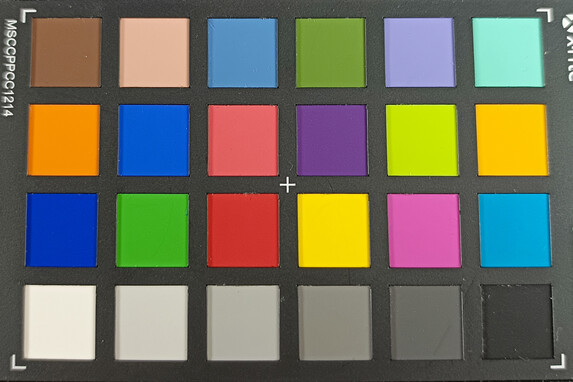
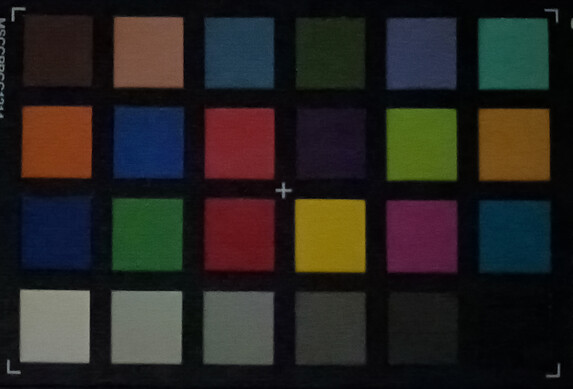
Display - Unfortunately with PWM
The inner AMOLED screen in 22:9 format uses an extended Full HD resolution and can dynamically adjust its frame rate between 1 and 120 Hz. Thus, power can be saved when viewing an image or text, while smooth scrolling is possible without any problems.
In terms of brightness, the Tecno Phantom V Flip does not have to hide with its screen either: 797 cd/m² with all-white as the average maximum brightness is a decent value, especially since a luminosity of up to 954 cd/m² is measurable on smaller surfaces.
Unfortunately, we discovered PWM flickering on the AMOLED screen, so sensitive users should try the screen before buying the phone. The screen achieves a decent color reproduction, but particularly strong hues deviate a bit more from the optimum than in the comparison devices.
The front round screen is based on AMOLED technology and has a resolution of 466 x 466 pixels. The maximum refresh rate of the screen is 60 Hz.
| |||||||||||||||||||||||||
Brightness Distribution: 95 %
Center on Battery: 822 cd/m²
Contrast: ∞:1 (Black: 0 cd/m²)
ΔE ColorChecker Calman: 3.5 | ∀{0.5-29.43 Ø4.77}
ΔE Greyscale Calman: 2 | ∀{0.09-98 Ø5}
100% sRGB (Calman 2D)
Gamma: 2.249
CCT: 6815 K
| Tecno Phantom V Flip AMOLED, 2640x1080, 6.9" | Motorola Razr 40 P-OLED, 2640x1080, 6.9" | Samsung Galaxy Z Flip5 5G Dynamic AMOLED, 2640x1080, 6.7" | Huawei P50 Pocket Foldable OLED, 2790x1188, 6.9" | |
|---|---|---|---|---|
| Response Times | -29% | -47% | -238% | |
| Response Time Grey 50% / Grey 80% * (ms) | 1.5 ? | 1.7 ? -13% | 1.42 ? 5% | 8.164 ? -444% |
| Response Time Black / White * (ms) | 0.9 ? | 1.3 ? -44% | 1.78 ? -98% | 1.18 ? -31% |
| PWM Frequency (Hz) | 60 | 180.3 | 120 | 119.6 |
| Screen | 33% | 15% | 22% | |
| Brightness middle (cd/m²) | 822 | 982 19% | 836 2% | 780 -5% |
| Brightness (cd/m²) | 797 | 1002 26% | 848 6% | 768 -4% |
| Brightness Distribution (%) | 95 | 85 -11% | 97 2% | 96 1% |
| Black Level * (cd/m²) | ||||
| Colorchecker dE 2000 * | 3.5 | 0.93 73% | 2.6 26% | 1.1 69% |
| Colorchecker dE 2000 max. * | 6.6 | 2.52 62% | 4.5 32% | 3.1 53% |
| Greyscale dE 2000 * | 2 | 1.4 30% | 1.6 20% | 1.6 20% |
| Gamma | 2.249 98% | 2.188 101% | 2.22 99% | 2.23 99% |
| CCT | 6815 95% | 6480 100% | 6319 103% | 6483 100% |
| Total Average (Program / Settings) | 2% /
18% | -16% /
-1% | -108% /
-43% |
* ... smaller is better
Display Response Times
| ↔ Response Time Black to White | ||
|---|---|---|
| 0.9 ms ... rise ↗ and fall ↘ combined | ↗ 0.4 ms rise | |
| ↘ 0.5 ms fall | ||
| The screen shows very fast response rates in our tests and should be very well suited for fast-paced gaming. In comparison, all tested devices range from 0.1 (minimum) to 240 (maximum) ms. » 2 % of all devices are better. This means that the measured response time is better than the average of all tested devices (20.2 ms). | ||
| ↔ Response Time 50% Grey to 80% Grey | ||
| 1.5 ms ... rise ↗ and fall ↘ combined | ↗ 0.7 ms rise | |
| ↘ 0.8 ms fall | ||
| The screen shows very fast response rates in our tests and should be very well suited for fast-paced gaming. In comparison, all tested devices range from 0.165 (minimum) to 636 (maximum) ms. » 6 % of all devices are better. This means that the measured response time is better than the average of all tested devices (31.6 ms). | ||
Screen Flickering / PWM (Pulse-Width Modulation)
| Screen flickering / PWM detected | 60 Hz | ||
The display backlight flickers at 60 Hz (worst case, e.g., utilizing PWM) . The frequency of 60 Hz is very low, so the flickering may cause eyestrain and headaches after extended use. In comparison: 53 % of all tested devices do not use PWM to dim the display. If PWM was detected, an average of 8081 (minimum: 5 - maximum: 343500) Hz was measured. | |||
Measurement series with fixed zoom level and different brightness settings
Performance, emissions and battery life - Enough power for everyday use
Quite new MediaTek Dimensity 8050 is used as the SoC, but its technical specifications correspond to the already older Dimensity 1300. With real high-end processors like in the Galaxy Z Flip5, the SoC cannot keep up in terms of performance, but you still get a very smooth system in everyday use. The differences are more visible in very demanding applications.
Especially in graphically demanding programs, such as rendering in 4K, the Tecno Phantom V Flip is slower than its rivals with a high-end SoC. Internet browsing is fast on our test device, images are loaded quickly and are usually available while scrolling. The memory is also fast, but the memory controller cannot fully utilize the maximum speed of the flash modules.
There is a noticeable heat buildup under a longer load due to the slim case of the phone. However, this does not affect the SoC; the performance is constant at a high level in the 3DMark stress tests.
The stereo speakers of the flip phone can get reasonably loud, but they sound unpleasantly treble-heavy at maximum volume. This improves a bit when the sound pressure is reduced, but the speakers never sound really good. However, external speakers or headphones can be connected via USB-C or Bluetooth. This works smoothly, and there are also a few codecs for wireless sound transmission with SBC, AAC, aptX, aptX HD, LDAC, and LHDC V3 and V5.
There is not that much room for the battery in the foldable case, so you have to be content with 4,000 mAh as battery capacity. The phone is thus on par with the competition and can also provide a decent runtime for the product category with almost 10 hours in our WLAN test. You should be able to get through the day without charging if you do not use the phone for too demanding activities. The maximum charging power is 45 watts, which means the battery is full again in just under 1 hour.
| Tecno Phantom V Flip | Motorola Razr 40 | Samsung Galaxy Z Flip5 5G | Huawei P50 Pocket | Average 256 GB UFS 3.1 Flash | Average of class Smartphone | |
|---|---|---|---|---|---|---|
| AndroBench 3-5 | -17% | 47% | -3% | 7% | 28% | |
| Sequential Read 256KB (MB/s) | 1814.9 | 955.8 -47% | 3412.35 88% | 1839 1% | 1757 ? -3% | 2235 ? 23% |
| Sequential Write 256KB (MB/s) | 1490.7 | 804.3 -46% | 2289.61 54% | 575 -61% | 1204 ? -19% | 1871 ? 26% |
| Random Read 4KB (MB/s) | 249.9 | 290.8 16% | 444.6 78% | 263.5 5% | 287 ? 15% | 297 ? 19% |
| Random Write 4KB (MB/s) | 238.9 | 257.5 8% | 161.87 -32% | 342.1 43% | 318 ? 33% | 343 ? 44% |
Temperature
(-) The maximum temperature on the upper side is 55.4 °C / 132 F, compared to the average of 35.2 °C / 95 F, ranging from 21.9 to 247 °C for the class Smartphone.
(-) The bottom heats up to a maximum of 45.9 °C / 115 F, compared to the average of 34 °C / 93 F
(+) In idle usage, the average temperature for the upper side is 26.3 °C / 79 F, compared to the device average of 32.9 °C / 91 F.
| 3DMark | |
| Wild Life Extreme Stress Test | |
| Tecno Phantom V Flip | |
| Motorola Razr 40 | |
| Huawei P50 Pocket | |
| Samsung Galaxy Z Flip5 5G | |
| Wild Life Stress Test Stability | |
| Tecno Phantom V Flip | |
| Motorola Razr 40 | |
| Huawei P50 Pocket | |
| Samsung Galaxy Z Flip5 5G | |
Speaker
Tecno Phantom V Flip audio analysis
(±) | speaker loudness is average but good (81.9 dB)
Bass 100 - 315 Hz
(-) | nearly no bass - on average 24.3% lower than median
(±) | linearity of bass is average (9.9% delta to prev. frequency)
Mids 400 - 2000 Hz
(±) | higher mids - on average 8.4% higher than median
(±) | linearity of mids is average (7.3% delta to prev. frequency)
Highs 2 - 16 kHz
(±) | higher highs - on average 10.4% higher than median
(+) | highs are linear (6.7% delta to prev. frequency)
Overall 100 - 16.000 Hz
(-) | overall sound is not linear (30.1% difference to median)
Compared to same class
» 78% of all tested devices in this class were better, 3% similar, 18% worse
» The best had a delta of 11%, average was 35%, worst was 134%
Compared to all devices tested
» 88% of all tested devices were better, 3% similar, 9% worse
» The best had a delta of 4%, average was 24%, worst was 134%
Huawei P50 Pocket audio analysis
(+) | speakers can play relatively loud (90.1 dB)
Bass 100 - 315 Hz
(-) | nearly no bass - on average 23% lower than median
(±) | linearity of bass is average (8.2% delta to prev. frequency)
Mids 400 - 2000 Hz
(+) | balanced mids - only 4.1% away from median
(+) | mids are linear (4% delta to prev. frequency)
Highs 2 - 16 kHz
(+) | balanced highs - only 4.5% away from median
(+) | highs are linear (4.8% delta to prev. frequency)
Overall 100 - 16.000 Hz
(±) | linearity of overall sound is average (16.1% difference to median)
Compared to same class
» 5% of all tested devices in this class were better, 4% similar, 90% worse
» The best had a delta of 11%, average was 35%, worst was 134%
Compared to all devices tested
» 25% of all tested devices were better, 5% similar, 70% worse
» The best had a delta of 4%, average was 24%, worst was 134%
Battery life
| Battery Runtime - WiFi Websurfing | |
| Average of class Smartphone (12.1 - 54.1, n=208, last 2 years) | |
| Motorola Razr 40 | |
| Samsung Galaxy Z Flip5 5G | |
| Tecno Phantom V Flip | |
| Huawei P50 Pocket | |
Pros
Cons
Verdict - Phantom V Flip as a cheaper alternative
If you want a huge front display on your flip phone and absolute top performance, you will probably have to spend more than 700 Euros. However, those who prefer to save money will get a solid alternative in the Tecno Phantom V Flip: The main camera takes good pictures and is also flexible thanks to wide-angle support. Thanks to a robust hinge, the phone can be stabilized in many positions and can thus be used for watching videos or placed on the table like a camera with a tripod.
The round front display can only show a few widgets, but it is completely sufficient for basic information or as a viewfinder for the camera. The phone has a good manufacturing quality and enough performance for everyday use. The battery life is not as good as in conventional phones, but the Phantom V Flip recharges quite quickly.
However, some things bother us: The phone does not fully utilize the high speed of its UFS 3.1 storage, the speakers do not offer a particularly good sound, and the security patches are a bit older. The fingerprint sensor also proved to be somewhat unreliable in our test.
As Tecno's first flip phone in the West, the Phantom V Flip cuts quite a good figure: High-quality main camera, bright AMOLED, and stable hinge. All this is available at a lower price than the established competition.
The top dog among flip phones is certainly the Samsung Galaxy Z Flip5 which offers even more power and has already dropped in price. It is currently available at amazon.de starting from 829 Euros. The Motorola Razr 40 also only offers a small front display and some advantages like eSIM support and DC dimming.
Price and availability
The Tecno Phantom V Flip is not yet available in Europe at the time of testing, but should soon be offered at the manufacturer's price of 699 Euros.
Tecno Phantom V Flip
- 10/05/2023 v7 (old)
Florian Schmitt
Transparency
The selection of devices to be reviewed is made by our editorial team. The test sample was provided to the author as a loan by the manufacturer or retailer for the purpose of this review. The lender had no influence on this review, nor did the manufacturer receive a copy of this review before publication. There was no obligation to publish this review. As an independent media company, Notebookcheck is not subjected to the authority of manufacturers, retailers or publishers.
This is how Notebookcheck is testing
Every year, Notebookcheck independently reviews hundreds of laptops and smartphones using standardized procedures to ensure that all results are comparable. We have continuously developed our test methods for around 20 years and set industry standards in the process. In our test labs, high-quality measuring equipment is utilized by experienced technicians and editors. These tests involve a multi-stage validation process. Our complex rating system is based on hundreds of well-founded measurements and benchmarks, which maintains objectivity. Further information on our test methods can be found here.


